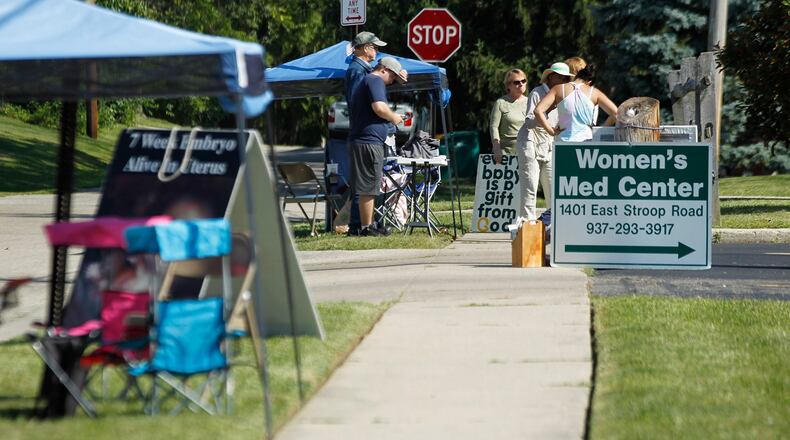Over the past 10 years, abortions dropped by nearly a third, from 30,859 in 2007 to 20,893 in 2017.
RELATED: Kettering abortion provider appeals ruling that would force closure
The annual report uses data reported to the state health department but does not include any identifying information. In 2017, 85 percent of the induced abortions occurred at 12 or less weeks of gestation and 85 percent of the women reported being single. African-Americans represented 44 percent of the women terminating pregnancies in 2017. And 62-percent of women who obtained an abortion last year reported already having one or more children.
Abortion is front and center in Ohio and American politics.
TRENDING: Dayton Arcade developer says original investors will be paid
In Washington, D.C., a battle is being waged over the confirmation of U.S. Supreme Court nominee Brett Kavanaugh, a conservative who will likely tip the balance of the nine-member court. And in Ohio the two major party candidates for governor — Democrat Richard Cordray and Republican Mike DeWine — hold widely different views on abortion.
“I am pro-life. I believe that government exists to protect the most vulnerable people. That includes the unborn as well as the born,” DeWine said in the first of three gubernatorial debates.
RELATED: Common abortion surgical procedure under fire in Ohio
Cordray said in the same debate: “A woman’s right to make her own personal health decisions should be protected in Ohio. I am for a woman’s right to choose. Mike DeWine is against it.”
DeWine said as governor, he would sign a “heartbeat bill” that would ban abortions once a fetal heartbeat can be detected, which is often before women realize they’re pregnant. Cordray said he would veto such a bill.
During Republican John Kasich’s eight years as governor, he has signed more than a dozen abortion restrictions, including a bill that makes it a crime for doctors to perform abortions if the woman wants to terminate because the fetus may have Down syndrome; a ban on abortions after 20 weeks gestation; a mandate that clinics have transfer agreements with local hospitals in case of emergencies; stricter standards for juveniles seeking a judicial bypass instead of parental consent to terminate their pregnancies; and a prohibition on public hospitals performing abortions or holding transfer agreements.
On Jan. 22, 1973, the U.S. Supreme Court ruled 7-2 in Roe v Wade that women have the constitutional right to terminate their pregnancies. It gave the state the power to regulate abortion to protect the health of the mother and that authority increased as a pregnancy progressed. Once a fetus is viable outside the womb, the state has an interest in protecting that potential life with restrictions on abortions.
Total induced abortions in Ohio:
2017: 20,893
2016: 20,672
2015: 20,976
2014: 21,186
2013: 23,216
Source: Ohio Department of Health
2017 Abortions in Ohio
Total: 20,983
Under age 18: 637
Age 18 to 29: 13,987
Age 30 to 39: 5,659
Over age 40: 610
Source: Ohio Department of Health
About the Author

